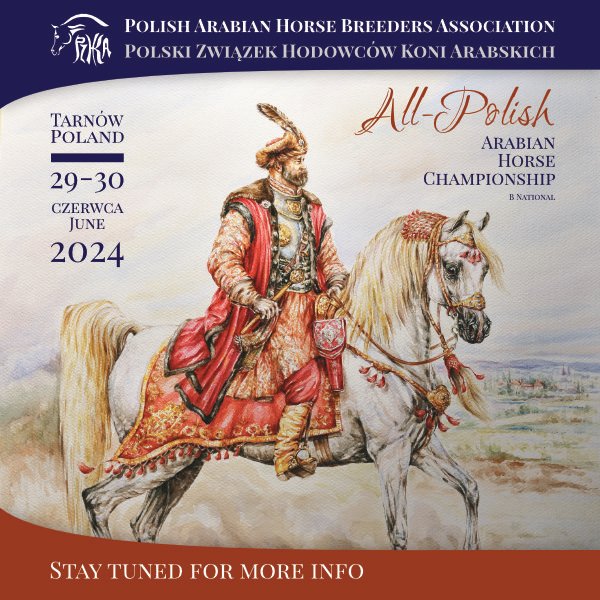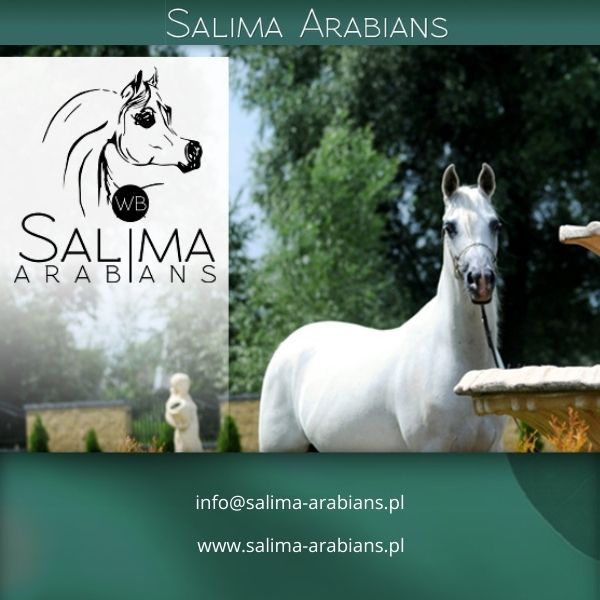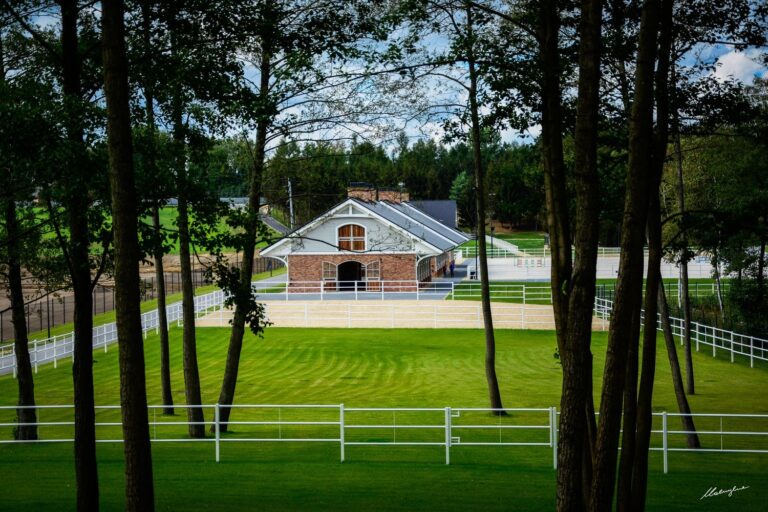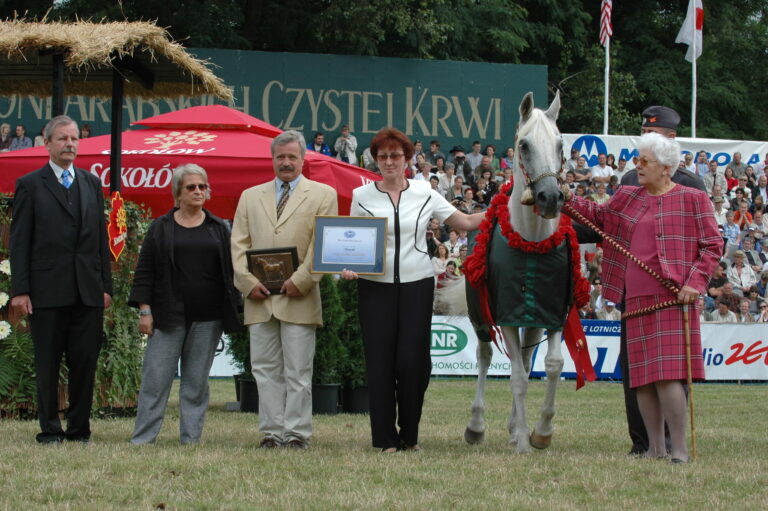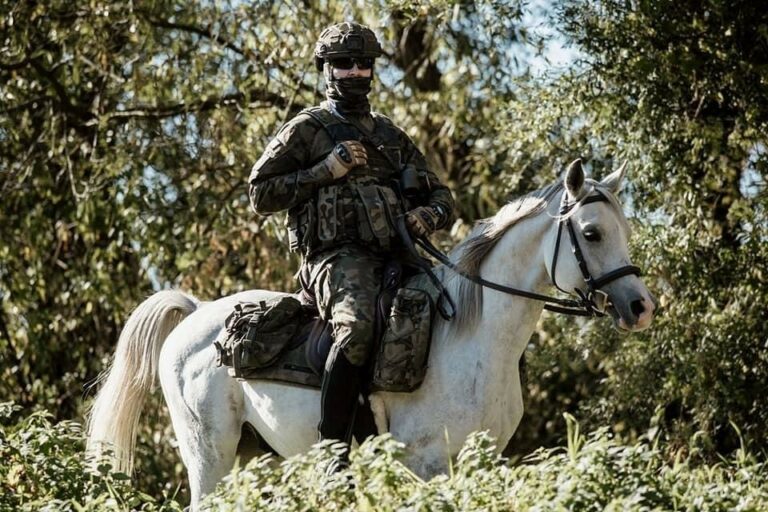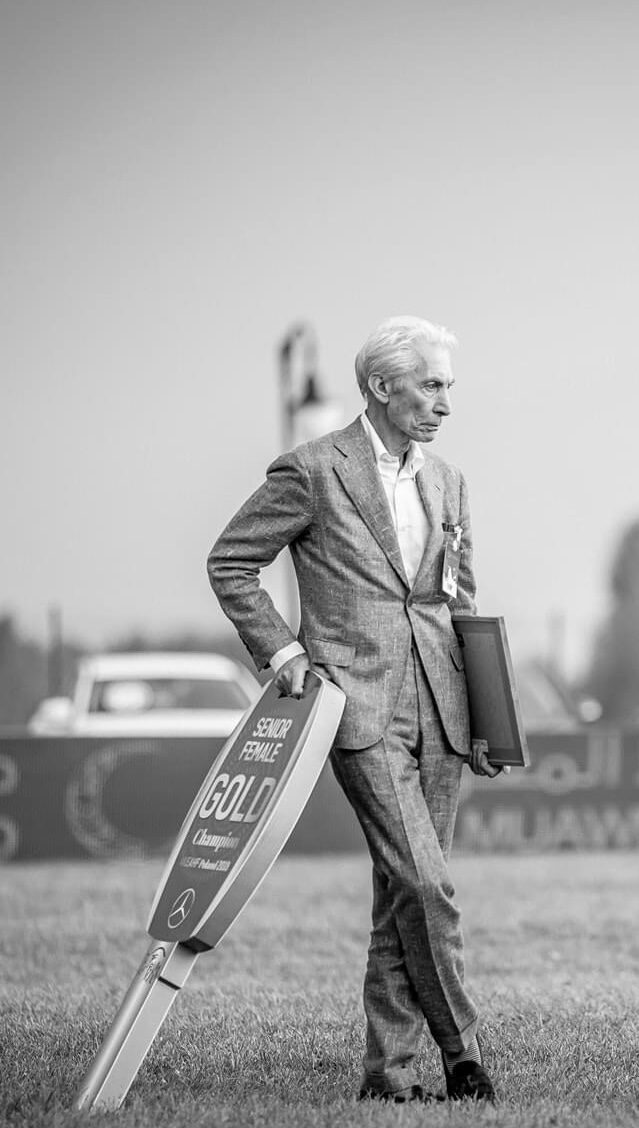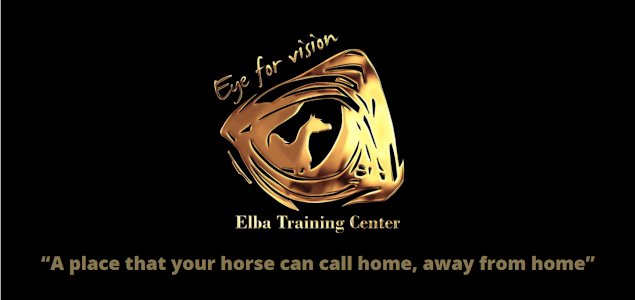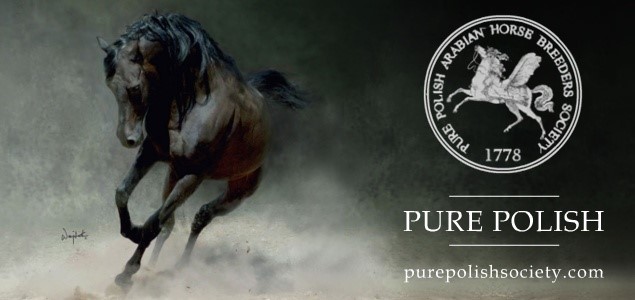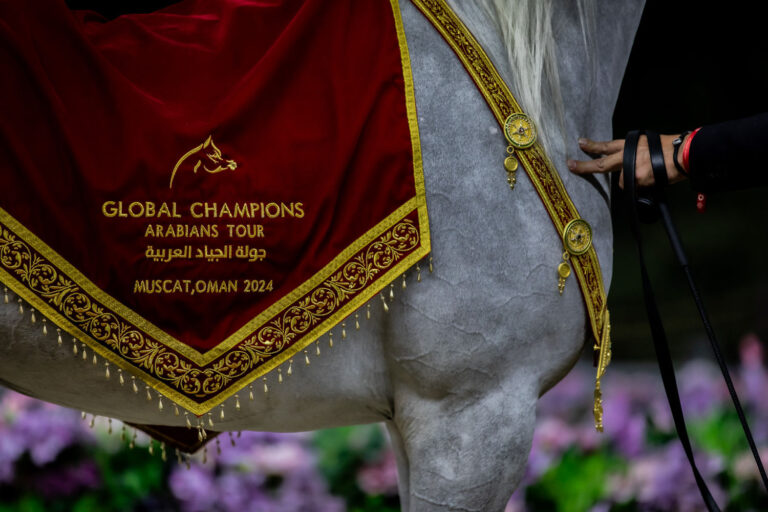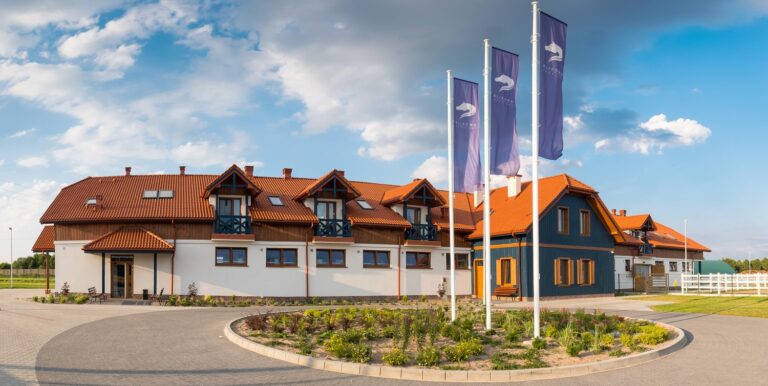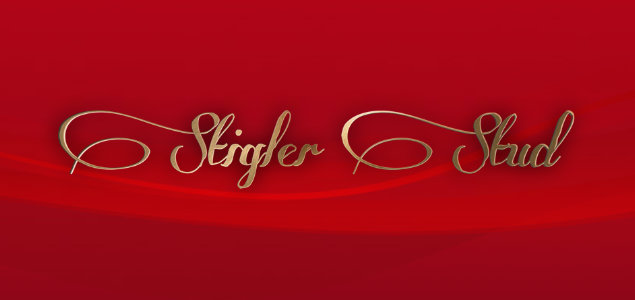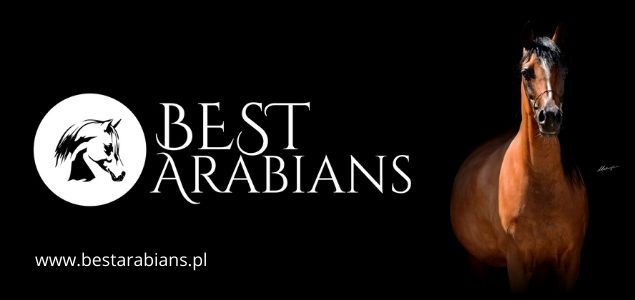
KLAUS GEORG BESTE – General Manager of Kuwait National Stud, Bait Al Arab. He has acted as General Secretary for the German Arab Horse Society for 22 years, as well as being a trainer of Arabian horses and a rider. Since 1985 he has been an international judge at Arabian shows (also at Janów Podlaski) and equestrian competitions, which allowed him to visit over 20 countries. During an interview for polskiearaby.pl he sheds some light on his experience, favorite horses, his vision of horse breeding and hopes for the future.
Monika Luft: How did you come to be at Bait Al Arab?
Klaus G. Beste: I had worked twenty two years for the German Arabian Horse Society which had developed during this time to the second largest in the world after the American Arabian horse society. During this time I used to travel quite often to Middle Eastern countries. On several occasions I have visited the private farms in Kuwait and the State Stud (The Arabian Horse Center) which is supervised by the Arabian Horse Committee in which Mr. Mohammed Al Marzouk, Ajmal Arabian Stud, is very active and supports the State Stud a lot. While meeting with Mr. Al Marzouk I came to know that they are looking for a manager for the Kuwait State Stud and I also learnt about his vision for the future of Kuwait State Stud. I was offered to be a part of their team as the manager. This is a fascinating project and a great challenge and I decided to join the team. Kuwait State Stud is now named Bait Al Arab Kuwait State Stud.
M.L.: The biggest stars that you currently deal with are…
K.B.: At the Kuwait state stud as well as the private farms we are focusing very much on the strains and families within the breed. Bait Al Arab Kuwait State Stud is very fortunate to own some very valuable mares which represent the main strains and families. One of the most important is Latiefa by Hamasa Khazzan out of Hamasa Tarifa by Farag. She is an outstanding producer and she was just awarded with the WAHO trophy. She created her own dynasty at Bait Al Arab Kuwait State Stud. Beside her we have some outstanding daughters of the world wide well known top producing stallion Ansata Hejazi which is owned by Mr. Mohammed Al Marzouk, Ajmal Arabian stud. This stallion has stamped Kuwait Arabian horse breeding. The most influential daughters of Ansata Hejazi at Kuwait State Stud are Ansata Sherrara out of Ansata Shalimar and Wafaa El Kuwait out of Ansata White Nile. Another mare which was most essential for our breeding program was Ansata Mertya by Ansata Halim Shah. She unfortunately passed away much early but left two wonderful daughters. Our main sire is Ansata Sirius by Ansata Iemhotep out of Ansata Sekhmet who is producing very well for us.
M.L.: What is the difference in the approach to breeding in Europe and the Middle East?
K.B.: In both parts of the world, Europe as well as in the Middle East, breeders of pure bred Arabian horses are sharing the same passion and enthusiasm as well as love towards the most charismatic and noble horse breed which is the Arabian horse. In addition to this breeders in the Middle East consider the pure bred Arabian horse as a part of their culture, history and heritage. With their breeding programs they try to preserve their tradition and the future of the pure bred Arabian horse which always has been a major part of their life. It is also a well known fact that the Arabian horse belongs to Arab people and to the Arabian Peninsula.
M.L.: You have been in Poland numerous times. How did your impressions change over the years? When judging in Janów Podlaski you had the chance to take a closer look at Polish breeding. In your opinion – is it going in the right direction?
K.B.: It’s true, I have been to Poland several times either to visit the state own studs Janów Podlaski, Michałów and Białka to enjoy their beautiful horses and to follow their breeding program. I had twice the honor to judge the Polish Nationals at the Janów Podlaski. The discussions which I had over the years with outstanding horsemen in Poland like the late director of Janów Podlaski, Mr. Krzyształowicz or the late director of Michałów, Mr. Jaworowski and the new directors Dr. M. Trela, Mr. Białobok and Mr. Urbański are still in my mind. I have learned a lot from them. I respect the Polish breeding program for the hard work to produce not only typy, charismatic and well confirmed Arabian horses with excellent movement, but also for the fact that these horses should be able to used for performance. I like the idea how they select the horses they would like to add to their breeding program. The directors of the Polish State Studs have a vision. On one hand they are keeping the tradition and they keep very valuable dame lines. On the other hand they have an open mind to bring stallions from outside Poland even if the pedigree is maybe not straight Polish breeding. They select the produce very strongly they think in generations. The Polish state studs avoid overcoming the difficult times and it seems to me that they are looking for a bright future.
Beside the Polish state studs, private farms are coming up more and more and private breeders are more and more successful in different fields like showing, racing and riding sports competitions. It appears to me that there is a very good relationship between the state studs and the private breeders. May this continue in the future.
I strongly believe that the Polish Arabian horse breeding is going into the right direction. They have a fantastic breeding stock, wonderful dame lines, and strongly selected stallions. They keep their mind open to add valuable horses from outside to their breeding program. Beside this real horseman and horsewomen are doing their job excellent.
M.L.: For 22 years you have been the co-organizer of the All Nations Cup in Aachen. According to you do breeders draw conclusions from the confrontation of the best horses in the world?
K.B.: The major shows all over the world, whether it is the Scottsdale Show or the US Nationals, the European Championships or the All Nations Cup in Europe or the top shows in the Middle East like in Dubai, Sharjah, Jordan or Qatar are influencing the breeding program of those who love to show Arabian horses and try to breed particularly for the shows. These breeders watch major events and follow the judge’s decisions. The top show horses, stallions as well as mares which have been successful in winning championships at the above mentioned shows are used intensively and the champion stallions breeding books are always full. I have the impression that Arabian horse breeding will be more and more specialized and focused in to three directions: (a) breeding to produce show horses, (b) breeding for racing skill (c) breed specifically for any kind of riding sports competition, whether this is western riding, dressage or show jumping. While practicing this we forget the purpose of breeding a charismatic, beautiful but also versatile horse which should also be a wonderful companion for its breeder or owner and their family.
M.L.: Which horses embedded themselves in your memory most during those years? Which made the largest impression?

K.B.: This would be a long list… But there are three mares in my mind which I will never forget as they touched my heart so much when I saw them at the first sight. Since then they are in my memory and when I think about them I start dreaming. The first one is the Polish mare Pilarka. I saw her the first time in Oostend, Belgium where she had won the Championship title. She had dominated the scene with her charismatic expression and unbelievable presence. The second is the straight Egyptian mare Ansata Selket. I met her in the USA during one of my visits to Ansata Arabian stud. Her beauty and noble expression is just unbelievable. She has now her home at Al Rayyan Farm, Qatar. Whenever I visit the farm I try to be close with her. The third mare is the German bred Mangani. She may not be known to many spectators of today’s Arabian horse shows but she was successfully shown in the late eighties. I judged her at a local show in Germany and could not get my eyes away from her. Beside her success in the show ring she was a lovely family companion and I was always overwhelmed by her beauty and feminine appeal.
M.L.: As a judge, what do you focus on most?
K.B.: I am focusing on Arabian type. Type makes the difference in all horse breeds and every breeder whether he is focusing on ponies, oldenburg carriage horses, heavy draft horses or Arabians is proud to preserve the type of the breed which has his love and passion. Type is often misunderstood as only the beautiful head, but for me it is charisma, solid confirmation, tail carriage, movement which can be used also under saddle and exotic expression.
M.L.: Is judging a pleasant job? It means many hours spent on the arena, stress, fear of making a mistake, and quite often a feeling of pressure exerted by the sponsors.
K.B.: I had judged Arabian horse shows for more then the past twenty years in more then twenty countries. Among them local shows, national championships, international shows, European championships and World championships. I have always enjoyed judging horses and felt much honored for the trust and faith of the organizing committees as well as the owners who showed me their beloved Arabian horses. I never experienced pressure and I have tried to exert my best decision. I always try to be fair and accurate. This doesn’t mean that I had never made mistakes. It happened every now and then. After the show if I realize that I have taken a wrong decision, I try to meet the owners to clarify my judgment.
M.L.: The type of the Arabian horse, as everything in the world, is subject to changes. Is it possible to predict what trend awaits us in the near future?
K.B.: Honestly I have no idea about the trend regarding the type which will await us in the future. Right now it seems to me that the top show horses are quite uniform. The top horses have cute faces with heads that look dishy, but mainly because they have a bump on their forehead, the necks seem endless long, the bodies and the croups are long and table flap and the movement from my point of view often does not have a clear tact and rhythm. Many show horses for me lack balance and harmony as well as charisma. I hope that in the future we will see more horses that have charismatic expression, more balanced confirmation as well as more light and floating movement which will swing through the whole body.
M.L.: But perfect Arabians have already been bred – take for example Pianissima or Marwan Al Shaqab. They score 94 points at the shows. Is it at all possible to breed an even more beautiful horse?
K.B.: There is a saying among the horsemen that there is no perfect horse. Scores should be only seen as a tool for the judges to find the ranking in the different age classes at shows. The scores are not only depending on the quality of the individual horse but also on the overall performance and quality of the other competitors in the same age class. If you have a class with very high quality for all competing horses, it needs extremely high points to find the winner but this doesn’t mean that the over all score for one particular horse will be repeated at all other shows in which the horse will compete. Finally every breeder should have his own goal and own vision to try his utmost for achieving this goal. This needs a lot of luck and patience but also one needs to have the knowledge about the ancestors by which way they have produced. There is no clear definition on the beauty and type. Every honest breeder should have his/her own taste and should decide for what he/she likes to go for.
M.L.: What is your personal philosophy in the matter of breeding Arabian horses?
K.B.: Every honest breeder initially should try to find out himself which type of Arabian horse he/she likes the most, and which bloodline within the purebred Arabian horse he would prefer the most. Then he/she needs to study as much as possible not only books, but visit other breeders and farms which have the type of horse he/she likes the most. He/she needs to study the pedigrees and learn as much as possible about the ancestors and how they produced. No one should follow any trends as they are changing very often and fast. Every one should have a goal and a vision and need to understand, it consumes lot of time and lot of efforts. Last but not least it’s important to understand that making profit should not be the issue when establishing a breeding program. Money should not be the issue, but love, passion and enthusiasm to preserve the purebred Arabian horse.
M.L.: What brings you the most joy: the birth of a long awaited foal? A champion title for your pupil? The purchase of a desired horse?
K.B.: The most joy for me is when I was able to help a very sick horse to overcome a sever illness. I feel grateful if at the end I won the battle and my patient survived.
M.L.: Do you have time for anything else besides horses? Any hobby?
K.B.: I am very fortunate, that I was able to make my hobby as my profession and I am spending most of my time with horses. My other hobbies are riding (in the past I did a lot of so called three days eventing), swimming, scuba diving , motor biking, traveling to interesting destinations and reading.
M.L.: What was the worst job in your life?
K.B.: Before I started studying agricultural science where I specialized myself in animal production and in particular horse breeding, I got a job as a volunteer at a farm. The farm had a breeding program for dressage horses, but the main business was dairy cows and they had about one hundred of them. At that time we had a very strong winter and the cows had to stay in the stables. The whole day they were tied at their feeding place and they left all the droppings behind. We had an automatic dung cleaning system which broke and it took one month to repair the dung cleaning system. During this time I had to clean the stables for the dairy cows three times a day by hand with a fork. It was a tuff job and the smell was not only in my clothes but even my hair and my skin smelled like a cow.
M.L.: The darkest memory?
K.B.: The darkest memory in my life was an accident which I had with my horse while competing in a three days event – in the cross country competition at one difficult obstacle. This happened because I didn’t realize that my horse got tired. Unluckily the horse broke its fore leg. At that time there was no hope of recovery as the fractured bone could not be fixed. This accident would not have happened if I would have interpreted the signals of my horse to me better.
M.L.: Today do you feel a fulfilled man or is there still a dream that you are pursuing?
K.B.: Well, I feel like a fulfilled man as my two boys are in good health and so far they are developing well. I have a wonderful wife who shares with me the same love and passion for the Arabian horse and supports me at any time. I have a job which I love and which is a great challenge and gives me the opportunity to contribute to the purebred Arabian horse and also to the country of Kuwait which became my second home.
The wishes which I have for the future is that I hopefully stay with good health as long as possible, that I never loose contact with my children and I hope that after retirement I will have a wonderful time with my wife and her Arabian horses.


